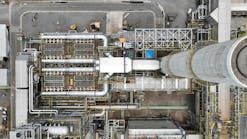EPA institutes fenceline monitoring in update of refining regulations
The US Environmental Protection Agency required fenceline monitoring for the first time as it issued a final rule updating refinery emissions control requirements. Refiners will be required to install the monitors to measure benzene at the edges of their plant sites to better protect and inform nearby communities, EPA said.
The fenceline monitors must encircle the facility to detect benzene at very low levels, and the monitoring data will be posted on EPA’s web site, the agency said. In response to public feedback, the rule also provides room for alternative monitoring methods in the future as technology advances, EPA said.
“The Clean Air Act requires a healthy environment for all communities,” EPA Administrator Gina McCarthy said. “This rule delivers on EPA’s commitment to environmental justice by reducing toxic air pollutants that impact families living near refineries by requiring, for the first time ever in an EPA air rule, monitoring of emissions at the fenceline, and corrective action if standards are exceeded.”
The rule also strengthens emission controls for flares, pressure-relief devices, storage tanks, and delayed coking units. EPA said the rule specifically would virtually eliminate visible flare emissions and releases by pressure-release devices by requiring a comprehensive program of process changes and pollution prevention measures for these sources. The rule also will require additional emission reductions from storage tanks and delayed cokers, some of which had no previous required controls, it noted.
EPA said all of this will reduce thousands of tons of hazardous air pollutants. Specifically, it estimated that the rule, when fully implemented, will cut 5,200 tons/year of toxic air pollutants and 50,000 tons/year of volatile organic compounds (VOC).
As a co-benefit, EPA projected that the limits will eliminate greenhouse gas emissions equivalent to 660,000 tons/year of carbon dioxide. “These cost-effective steps will have no noticeable impact on the cost of petroleum products at the approximately 150 petroleum refineries around the country,” the agency said.
AFPM, API responses
Two national oil industry trade associations were immediately critical. American Fuel & Petrochemical Manufacturers Pres. Chet Thompson said EPA’s new rule concluded that refinery emissions fall well under the significance level for chronic risk and are not a source of harm to surrounding communities.
“This conclusion demonstrates that the refinery hazardous air pollutant reductions have proven effective,” he said. “We therefore are disappointed by EPA’s decision to require additional expensive new emissions controls that provide little incremental health benefits.” AFPM will review the rule, “and our next move will be dictated by our findings,” Thompson said.
American Petroleum Institute Downstream Group Director Bob Greco said EPA’s final refining rule showed substantial improvements over the agency’s proposal. But the new regulations still could cost US refiners up to $1 billion, he warned.
Refineries have been reducing emissions for decades under voluntary programs and in compliance with existing regulations, Greco said. Through comments made during the rulemaking process, API identified and supported practical, cost-effective opportunities to reduce emissions even further in a manner that recognizes the complexity of the industry, which EPA took into account, he added.
“Despite these improvements, regulators need to be thoughtful about the additional impacts of new regulations and added costs to delivering affordable energy to US consumers,” said Greco. “Companies have already spent billions of dollars to reduce emissions by installing flare gas recovery and flare minimization systems to reduce GHG emissions, and air quality continues to improve as a result of these voluntary programs and existing regulations.”
Contact Nick Snow at [email protected].

Nick Snow
NICK SNOW covered oil and gas in Washington for more than 30 years. He worked in several capacities for The Oil Daily and was founding editor of Petroleum Finance Week before joining OGJ as its Washington correspondent in September 2005 and becoming its full-time Washington editor in October 2007. He retired from OGJ in January 2020.
